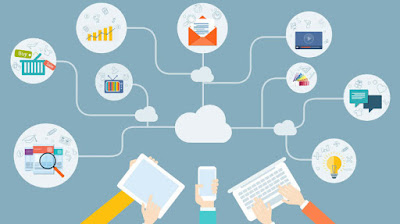Must-have Features of Corporate LMS to Drive Engagement and Performance
Modern learning management systems (LMS) are utilized by several organizations to train their dynamic workforce. These aid learning and development teams by providing relevant training for internal as well as extended workforce (channel partners, suppliers, resellers, vendors, and even customers). Enterprises are leveraging multiple benefits of using corporate LMS- reduced training costs, effectively delivery of custom content, and learning at their own pace of time and convenience.
 |
| Corporate LMS |
Best corporate learning platforms cater to the personalized learning needs of intended audiences. Top features of the new-age learning management platform include:
- Intuitive User Interface (UI)
The robust LMSs for corporate training have an icon-based intuitive UI which grabs maximum learner attention. These also embed different color themes, background images, and visual cues as per the personalized learning needs and preferences.
- Mobile learning
With an increasing number of external employees spread across different demographic locations, it is essential to create online courses for multiple mobile devices. The ability to undergo training anytime and anywhere aids employee to learn even on the go. Mobile content delivery also enables offline downloading, content accessibility, and get instant responses from experts.
- Compliance management
Several industries, such as healthcare and aviation, need to comply with state or federal regulations. Industry-specific compliant LMSs track participation and performance levels to ensure that employees meet compliance mandates.
- KPI-linked learning
Corporate LMS integrates with Human Resource Information System (HRIS), Sales Performance Systems, Dealer Management System (DMS), and others to fetch employee data. The platform collates Key Performance Indicators (KPIs) to create performance metrics and automatically assigns relevant training courses to intended learners. The KPI dashboard helps administrators to align learning with pertinent business goals.
- Social learning
Corporate training platforms serve as a common platform to share new ideas via polls, discussion forums, surveys, question answers, announcements, and more. Participating learners can also share posts and comments as well as seek expert advice in accordance to their personalized needs and preferences.
- Business Intelligence (BI) tool
A complete set of statistical, interactive, and graphical (pivots, charts, filters, etc.) tools. The BI tool generates automated reports for learner, admin, manager, and trainer. It also manages automatically scheduling of reports, printing reports as PDF, PPT, and Text files.
Some of the leading corporate LMS providers impart innovative e-learning solutions to meet emerging needs and stay competitive. While choosing the best enterprise LMS, you must first identify the features that perfectly fits your learning needs. With the support of a myriad of LMS features, G-Cube LMS also holds the niche to deliver the comprehensive learning experience for all. For more details, write to us at info@gc-solutions.net.





